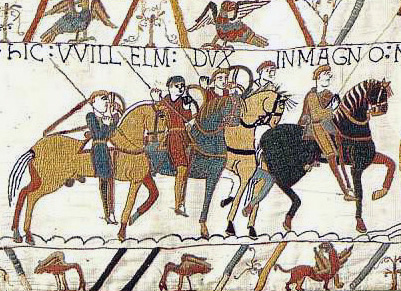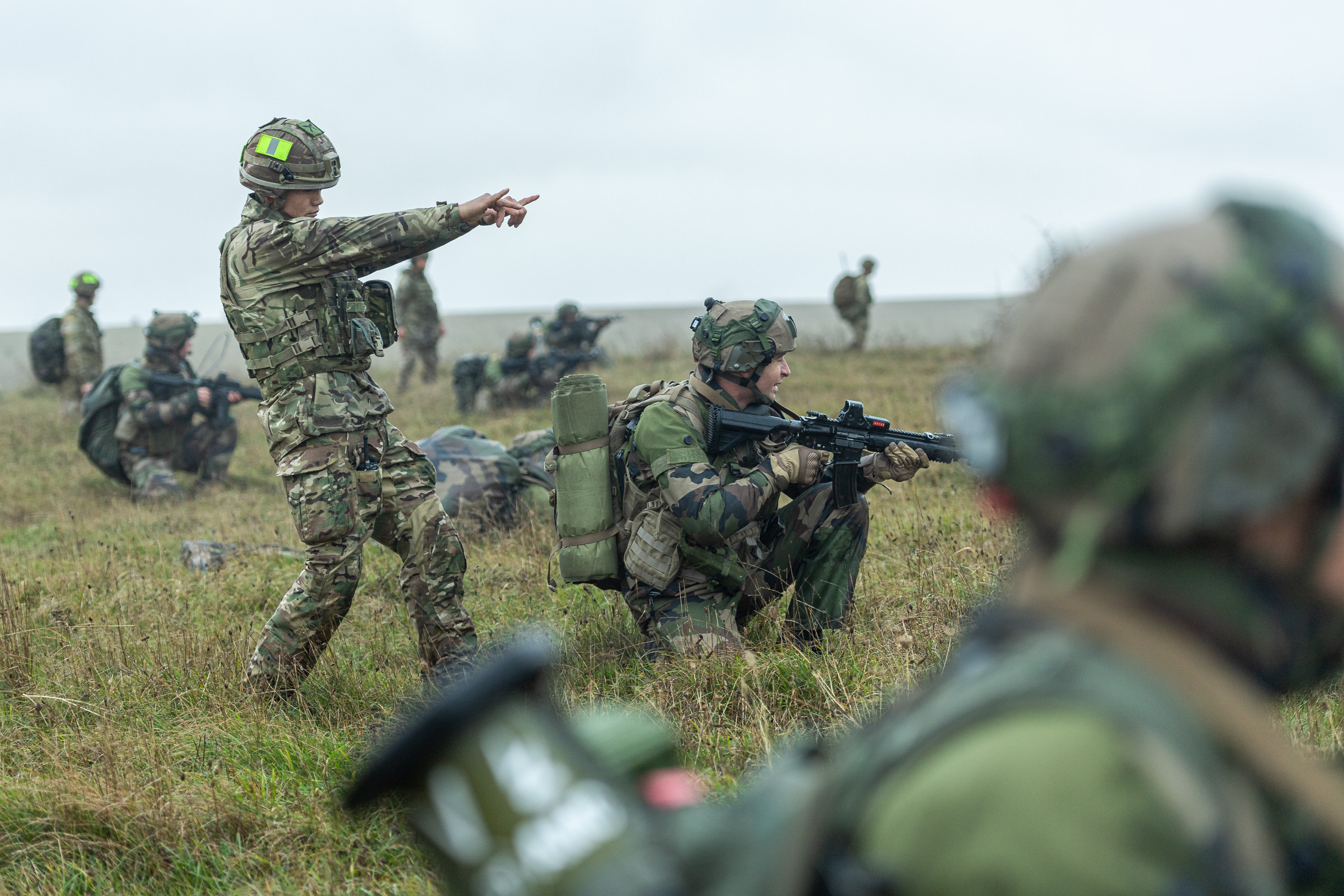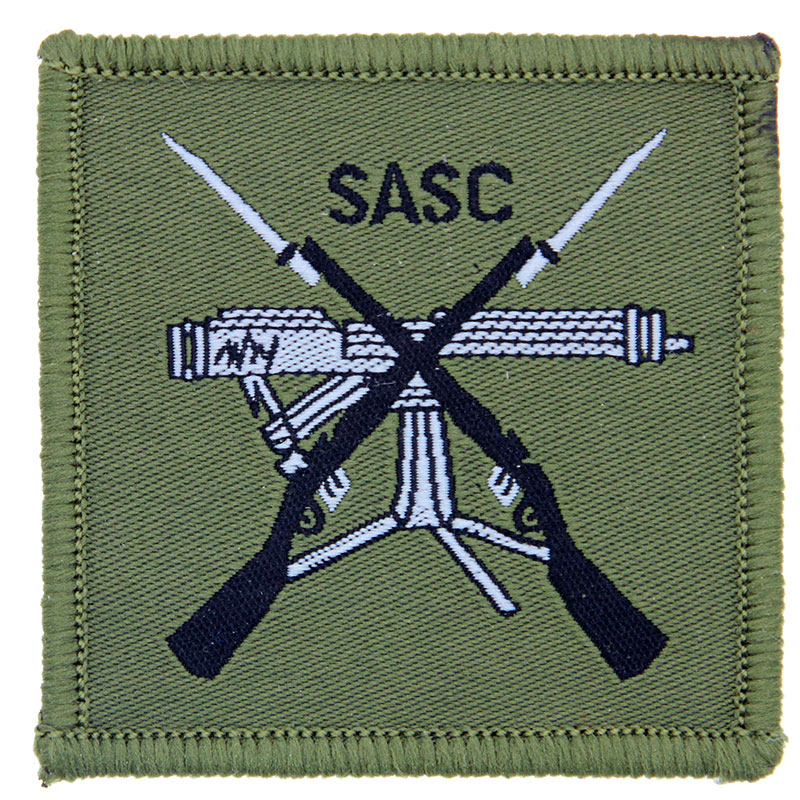|
.276 Enfield
The .276 Enfield (7×60mmRB) was an experimental rebated rim tapered bottlenecked centerfire military rifle cartridge developed in conjunction with the Pattern 1913 Enfield (P'13) rifle. Development was discontinued by the onset of World War I. History During the Second Boer War in South Africa (1899-1902), British authorities were obliged to re-evaluate rifle and ammunition design and tactics after facing Boer sharpshooters and snipers armed with Mauser Model 1895 rifles firing 7×57mm Mauser rounds with withering effectiveness, easily outranging the .303 British Mark II cartridge as regards accurate long-range fire. Government driven efforts to improve performance The .276 Enfield was designed with the intent of being more powerful than the .303 British cartridge used in the Lee–Enfield rifles and to be at least similar in size and performance to other large, powerful early 20th century military rifle cartridges, like the .280 Ross, 7.92×57mm Mauser, .30-06 Spring ... [...More Info...] [...Related Items...] OR: [Wikipedia] [Google] [Baidu] [Amazon] |
United Kingdom
The United Kingdom of Great Britain and Northern Ireland, commonly known as the United Kingdom (UK) or Britain, is a country in Northwestern Europe, off the coast of European mainland, the continental mainland. It comprises England, Scotland, Wales and Northern Ireland. The UK includes the island of Great Britain, the north-eastern part of the island of Ireland, and most of List of islands of the United Kingdom, the smaller islands within the British Isles, covering . Northern Ireland shares Republic of Ireland–United Kingdom border, a land border with the Republic of Ireland; otherwise, the UK is surrounded by the Atlantic Ocean, the North Sea, the English Channel, the Celtic Sea and the Irish Sea. It maintains sovereignty over the British Overseas Territories, which are located across various oceans and seas globally. The UK had an estimated population of over 68.2 million people in 2023. The capital and largest city of both England and the UK is London. The cities o ... [...More Info...] [...Related Items...] OR: [Wikipedia] [Google] [Baidu] [Amazon] |
30-06 Springfield
The .30-06 Springfield cartridge (weaponry), cartridge (pronounced "thirty-Names for the number 0 in English, aught-six" ), 7.62×63mm in metric notation, and called the .30 Gov't '06 by Winchester, was introduced to the United States Army in 1906 and later standardization, standardized; it remained in military use until the late 1970s. In the cartridge's name, ".30" refers to the nominal caliber of the bullet in inches; "06" refers to the year the cartridge was adopted, 1906. It replaced the .30-03 Springfield, 6mm Lee Navy, and .30-40 Krag cartridges. The .30-06 remained the U.S. Army's primary rifle and machine gun cartridge for nearly 50 years before being replaced by the 7.62×51mm NATO and 5.56×45mm NATO, both of which remain in current U.S. and NATO service. The cartridge remains a very popular sporting round, with ammunition produced by all major manufacturers. History In the early-1890s, the U.S. military adopted the smokeless powder .30-40 Krag rimmed cartridge. The ... [...More Info...] [...Related Items...] OR: [Wikipedia] [Google] [Baidu] [Amazon] |
South Africa
South Africa, officially the Republic of South Africa (RSA), is the Southern Africa, southernmost country in Africa. Its Provinces of South Africa, nine provinces are bounded to the south by of coastline that stretches along the Atlantic Ocean, South Atlantic and Indian Ocean; to the north by the neighbouring countries of Namibia, Botswana, and Zimbabwe; to the east and northeast by Mozambique and Eswatini; and it encloses Lesotho. Covering an area of , the country has Demographics of South Africa, a population of over 64 million people. Pretoria is the administrative capital, while Cape Town, as the seat of Parliament of South Africa, Parliament, is the legislative capital, and Bloemfontein is regarded as the judicial capital. The largest, most populous city is Johannesburg, followed by Cape Town and Durban. Cradle of Humankind, Archaeological findings suggest that various hominid species existed in South Africa about 2.5 million years ago, and modern humans inhabited the ... [...More Info...] [...Related Items...] OR: [Wikipedia] [Google] [Baidu] [Amazon] |
Battalion
A battalion is a military unit, typically consisting of up to one thousand soldiers. A battalion is commanded by a lieutenant colonel and subdivided into several Company (military unit), companies, each typically commanded by a Major (rank), major or a Captain (armed forces), captain. The typical battalion is built from three operational companies, one weapons company and one headquarters company. In some countries, battalions are exclusively infantry, while in others battalions are unit-level organizations. The word ''battalion'' has its origins in the Late Latin word ''battalion'', which is derived from ''battalia'', meaning "battle" or "combat." The term was used to describe a large group of soldiers ready for battle. Over time, its meaning evolved in military terminology. The word "battalion" came into the English language in the 16th century from the French language, French , meaning "battle squadron" (similar to the Italian language, Italian meaning the same thing) and ... [...More Info...] [...Related Items...] OR: [Wikipedia] [Google] [Baidu] [Amazon] |
Infantry
Infantry, or infantryman are a type of soldier who specialize in ground combat, typically fighting dismounted. Historically the term was used to describe foot soldiers, i.e. those who march and fight on foot. In modern usage, the term broadly encompasses a wide variety of subspecialties, including light infantry, irregular infantry, heavy infantry, mountain infantry, motorized infantry, mechanized infantry, Airborne forces, airborne infantry, Air assault, air assault infantry, and Marines, naval infantry. Other subtypes of infantry, such as line infantry and mounted infantry, were once commonplace but fell out of favor in the 1800s with the invention of more accurate and powerful weapons. Etymology and terminology In English, use of the term ''infantry'' began about the 1570s, describing soldiers who march and fight on foot. The word derives from Middle French , from older Italian (also Spanish) ''infanteria'' (foot soldiers too inexperienced for cavalry), from Latin '' ... [...More Info...] [...Related Items...] OR: [Wikipedia] [Google] [Baidu] [Amazon] |
Regiment
A regiment is a military unit. Its role and size varies markedly, depending on the country, military service, service, or administrative corps, specialisation. In Middle Ages, Medieval Europe, the term "regiment" denoted any large body of line regiment, front-line soldiers, recruited or conscripted in one geographical area, by a leader who was often also the feudal lord ''in capite'' of the soldiers. Lesser barons of knightly rank could be expected to muster or hire a Company (military unit), company or battalion from their manorial estate. By the end of the 17th century, infantry regiments in most European armies were permanent units, with approximately 800 men and commanded by a colonel. Definitions During the modern era, the word "regiment" – much like "corps" – may have two somewhat divergent meanings, which refer to two distinct roles: # a front-line military formation; or # an administrative or ceremonial unit. In many armies, the first role has been assumed by i ... [...More Info...] [...Related Items...] OR: [Wikipedia] [Google] [Baidu] [Amazon] |
Cavalry
Historically, cavalry (from the French word ''cavalerie'', itself derived from ''cheval'' meaning "horse") are groups of soldiers or warriors who Horses in warfare, fight mounted on horseback. Until the 20th century, cavalry were the most mobile of the combat arms, operating as light cavalry in the roles of reconnaissance, Screening (tactical), screening, and skirmisher, skirmishing, or as heavy cavalry for decisive economy of force and shock attacks. An individual soldier in the cavalry is known by a number of designations depending on era and tactics, such as a cavalryman, Equestrianism, horseman, trooper (rank), trooper, cataphract, knight, Drabant Corps of Charles XII, drabant, hussar, uhlan, mamluk, cuirassier, lancer, dragoon, samurai or horse archer. The designation of ''cavalry'' was not usually given to any Military animal, military forces that used other animals or platforms for mounts, such as chariots, Camel cavalry, camels or War elephant, elephants. Infantry who m ... [...More Info...] [...Related Items...] OR: [Wikipedia] [Google] [Baidu] [Amazon] |
Small Arms School Corps
The Small Arms School Corps (SASC) is a small corps of the British Army, established in 1853 by Lord Hardinge. Its personnel provide advice and instruction to infantry weapon trainers throughout the army, in order to maintain proficiency in the use of small arms and support weapons, and in range management. History Prior to 1838, the majority of British soldiers were issued with the "Brown Bess" Land Pattern Musket, a smooth-bore, muzzle loading black powder flintlock musket which had seen service in one form or another since 1722. In 1849, Claude-Étienne Minié produced the Minié rifle, although still a muzzle loader three important advances were incorporated. Firstly, it has a rifled bore; secondly used an expanding bullet that improved accuracy out to and greatly reduced reloading time; and thirdly incorporated percussion cap ignition of the black powder charge. Re-equipment of the army with this new firearm, which was adopted in 1851, continued through to 1855. The con ... [...More Info...] [...Related Items...] OR: [Wikipedia] [Google] [Baidu] [Amazon] |
Twist Rate
Rifling is the term for helical grooves machined into the internal surface of a firearms's barrel for imparting a spin to a projectile to improve its aerodynamic stability and accuracy. It is also the term (as a verb) for creating such grooves. The opposite of rifling is smoothbore. Rifling is measured in ''twist rate'', the distance the rifling takes to complete one full revolution, expressed as a ratio with 1 as its base (e.g., 1:). A shorter distance/lower ratio indicates a faster twist, generating a higher spin rate (and greater projectile stability). The combination of length, weight, and shape of a projectile determines the twist rate needed to gyroscopically stabilize it: barrels intended for short, large-diameter projectiles such as spherical lead balls require a very low twist rate, such as 1 turn in 48 inches (122 cm). Barrels intended for long, small-diameter projectiles, such as the ultra-low-drag 80-grain 0.223 inch bullets (5.2 g, 5.56&nbs ... [...More Info...] [...Related Items...] OR: [Wikipedia] [Google] [Baidu] [Amazon] |
Cartridge SA Ball
Cartridge may refer to: Objects * Cartridge (firearms), a type of modern ammunition * ROM cartridge, a removable component in an electronic device * Cartridge (respirator), a type of filter used in respirators * Ink cartridge, a component for inkjet printers that contains the ink * The liquid storage component of a vaporizer * Magnetic cartridge, an electromechanical transducer, commonly called a 'pickup', used to play records on a turntable Other uses * Donald Cartridge Donald Colin Cartridge (31 December 1933 – 24 September 2015) was an English first-class cricketer and educator. Cartridge was born in the Southampton suburb of Sholing in December 1933. He was educated at Itchen Grammar School and had the ... (1933–2015), English cricketer and educator * Cartridge Creek, a creek near Fresno, California, United States See also * * {{Disambiguation, geo, surname ... [...More Info...] [...Related Items...] OR: [Wikipedia] [Google] [Baidu] [Amazon] |




